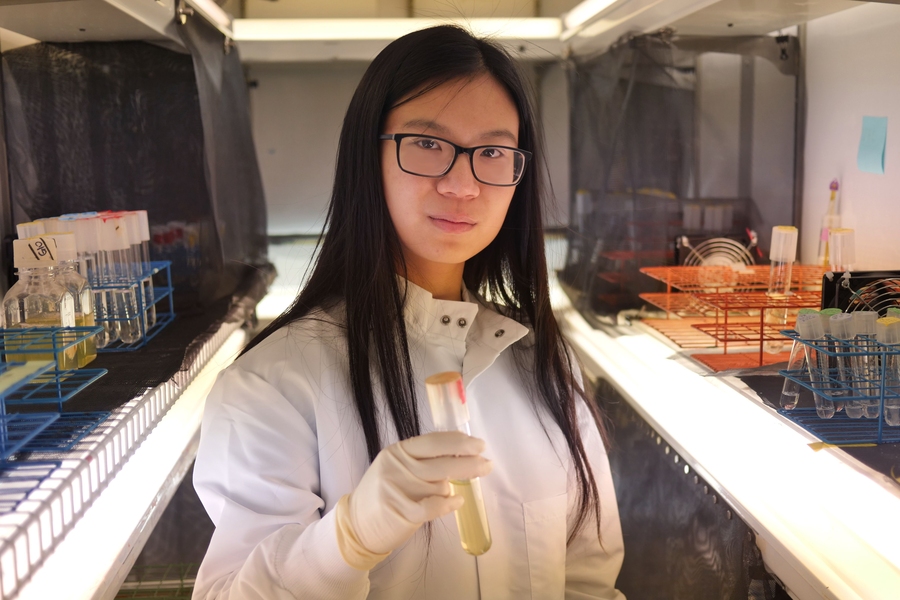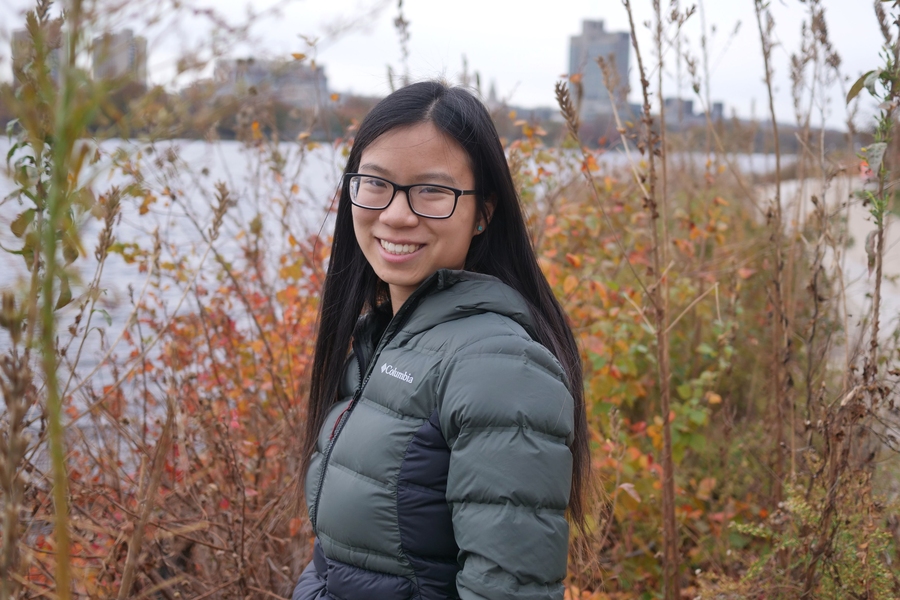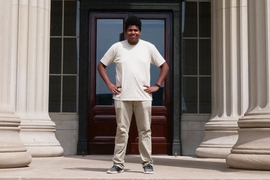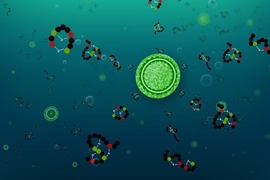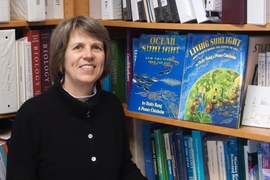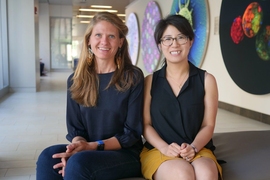In 2010, the U.S. Army Corps of Engineers began restoring the Broad Meadows salt marsh in Quincy, Massachusetts. The marsh, which had grown over with invasive reeds and needed to be dredged, abutted the Broad Meadows Middle School, and its three-year transformation fascinated one inquisitive student. “I was always super curious about what sorts of things were going on there,” says Rachel Shen, who was in eighth grade when they finally finished the project. She’d spend hours watching birds in the marsh, and catching minnows by the beach.
In her bedroom at home, she kept an eye on four aquariums furnished with anubias, hornwort, guppy grass, amazon swords, and “too many snails.” Now, living in a dorm as a sophomore at MIT, she’s had to scale back to a single one-gallon tank. But as a Course 7 (Biology) major minoring in environmental and sustainability studies, she gets an even closer look at the natural world, seeing what most of us can’t: the impurities in our water, the matrices of plant cells, and the invisible processes that cycle nutrients in the oceans.
Shen’s love for nature has always been coupled with scientific inquiry. Growing up, she took part in Splash and Spark workshops for grade schoolers, taught by MIT students. “From a young age, I was always that kid catching bugs,” she says. In her junior year of high school, she landed the perfect summer internship through Boston University’s GROW program: studying ant brains at BU’s Traniello lab. Within a colony, ants with different morphological traits perform different jobs as workers, guards, and drones. To see how the brains of these castes might be wired differently, Shen dosed the ants with serotonin and dopamine and looked for differences in the ways the neurotransmitters altered the ants’ social behavior.
This experience in the Traniello lab later connected Shen to her first campus job working for MITx Biology, which develops online courses and educational resources for students with Department of Biology faculty. Darcy Gordon, one of the administrators for GROW and a postdoc at the Traniello Lab, joined MITx Biology as a digital learning fellow just as Shen was beginning her first year. MITx was looking for students to beta-test their biochemistry course, and Gordon encouraged Shen to apply. “I’d never taken a biochem course before, but I had enough background to pick it up,” says Shen, who is always willing to try something new. She went through the entire course, giving feedback on lesson clarity and writing practice problems.
Using what she learned on the job, she’s now the biochem leader on a student project with the It’s On Us Data Sciences club (formerly Project ORCA) to develop a live map of water contamination by rigging autonomous boats with pollution sensors. Environmental restoration has always been important to her, but it was on her trip to the Navajo Nation with her first-year advisory group, Terrascope, that Shen saw the effects of water scarcity and contamination firsthand. She and her peers devised filtration and collection methods to bring to the community, but she found the most valuable part of the project to be “working with the people, and coming up with solutions that incorporated their local culture and local politics.”
Through the Undergraduate Research Opportunities Program (UROP), Shen has put her problem-solving skills to work in the lab. Last summer, she interned at Draper and the Velásquez-García Group in MIT’s Microsystems Technologies Laboratories. Through experiments, she observed how plant cells can be coaxed with hormones to reinforce their cell walls with lignin and cellulose, becoming “woody” — insights that can be used in the development of biomaterials.
For her next UROP, she sought out a lab where she could work alongside a larger team, and was drawn to the people in the lab of Sallie “Penny” Chisholm in MIT’s departments of Biology and Civil and Environmental Engineering, who study the marine cyanobacterium Prochlorococcus. “I really feel like I could learn a lot from them,” Shen says. “They’re great at explaining things.”
Prochlorococcus is one of the most abundant photosynthesizers in the ocean. Cyanobacteria are mixotrophs, which means they get their energy from the sun through photosynthesis, but can also take up nutrients like carbon and nitrogen from their environment. One source of carbon and nitrogen is found in chitin, the insoluble biopolymer that crustaceans and other marine organisms use to build their shells and exoskeletons. Billions of tons of chitin are produced in the oceans every year, and nearly all of it is recycled back into carbon, nitrogen, and minerals by marine bacteria, allowing it to be used again.
Shen is investigating whether Prochlorococcus also recycles chitin, like its close relative Synechococcus that secretes enzymes which can break down the polymer. In the lab’s grow room, she tends to test tubes that glow green with cyanobacteria. She’ll introduce chitin to half of the cultures to see if specific genes in Prochlorococcus are expressed that might be implicated in chitin degradation, and identify those genes with RNA sequencing.
Shen says working with Prochlorococcus is exciting because it’s a case study in which the smallest cellular processes of a species can have huge effects in its ecosystem. Cracking the chitin cycle would have implications for humans, too. Biochemists have been trying to turn chitin into a biodegradable alternative to plastic. “One thing I want to get out of my science education is learning the basic science,” she says, “but it’s really important to me that it has direct applications.”
Something else Shen has realized at MIT is that, whatever she ends up doing with her degree, she wants her research to involve fieldwork that takes her out into nature — maybe even back to the marsh, to restore shorelines and waterways. As she puts it, “something that’s directly relevant to people.” But she’s keeping her options open. “Currently I'm just trying to explore pretty much everything.”
